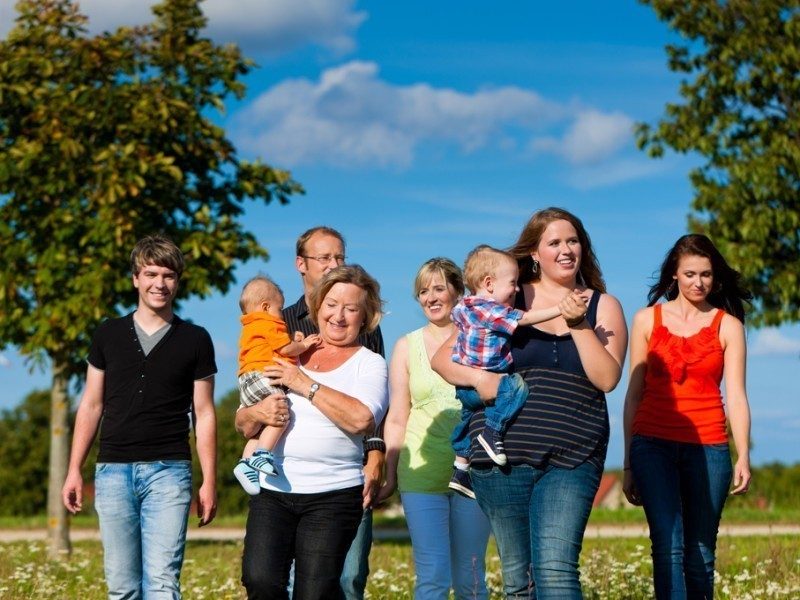Family rejection of LGB youth and those that are questioning their sexual orientation
Anecdotal reports suggest that LGB youth are coming out at younger ages, as compared to previous generations. Therefore, the impact of family rejection on LGB youth is becoming ever more critical.
Many more youth are coming out while they are still living in their family home – while they are heavily dependent on their family – and before they have access to a wider community that may be able to support them during their coming out process.
Unfortunately, not all families are willing or able to accept their LGB child, sister or brother, or their relative that is questioning their sexual orientation. This lack of acceptance can lead to the individual being rejected by their family.
These rejected youth then face an increased risk of negative outcomes – for example increased health risks. They are eight times more likely to attempt suicide, approximately six times more likely to report high levels of depression, three times more likely to use illegal drugs and three times more likely to engage in risky sexual behavior.
Unfortunately, instead of these behaviors being understood by the family as high-risk reactive behaviors to social stigma and non-acceptance by peers, family and society, the behaviors are sometimes used as additional evidence that there is something wrong with their relative. The behaviors are used as further support for seeking out reparative therapy.
Avoiding family rejection through entering reparative therapy
In order to remain with their family, the LGB youth are then forced to start reparative therapy. Some are forcibly transported to facilities that offer the therapy. However, others choose to start the therapy in order to decrease or avoid individual and family stigma associated with being LGB. Some start for fear of being thrown out of their family home.
These threats are very real for some. LGBT youth are disproportionately represented in foster care, for example. They enter for various reasons, including due to conflict, mistreatment or neglect related to their sexual orientation or gender identity. There is also a disproportionate number of LGBT homeless youth. These youth also report more negative experiences. For example, they are at a greater risk of suicidal ideation, and they report higher levels of victimization, alcohol abuse and survival sex, as compared to their non-LGBT homeless peers.
However, as many youth believe that their family are operating in their best interests and as many don’t want to lose their family, they do what their family requests and they start reparative therapy. Others feel there is nothing wrong with them but they start the therapy anyway as a way of supporting their parents in coming to terms with their sexual and/or gender orientation. Many will do what it takes to try and stay part of their family.
In the video below, Giancarlo Sanguinetti shares his story of receiving reparative therapy and what the experience was like for him. He entered the therapy to help his mother come to terms with his sexual orientation.
The real effects of reparative therapy
However, instead of helping the family, reparative therapy then serves to reinforce strained family relationships and it places the youth at increased risk of negative outcomes.
The American Academy of Child and Adolescent Psychiatry clarifies that: “There is no medically valid basis for attempting to prevent homosexuality, which is not an illness. On the contrary, such efforts may encourage family rejection and undermine self-esteem, connectedness and caring, important protective factors against suicidal ideation and attempts. Given that there is no evidence that efforts to alter sexual orientation are effective, beneficial or necessary, and the possibility that they carry the risk of significant harm, such interventions are contraindicated.”
The importance of family acceptance
This statement highlights the importance of family acceptance. In fact, LGBT adolescent youth that are accepted by their family do better in terms of their general health and well-being, as compared to those who report that their family rejected them. Family acceptance is associated with higher levels of self-esteem, social support and general health.
Family acceptance is also a protective factor that helps fight off depression, substance abuse, suicidal ideation and suicide attempts. The benefits of family acceptance are clearly important.
Plus, research has shown that even though some parents may react negatively to their child’s initial coming out, family relationships can improve after parents become more aware of and sensitized to the needs and well-being of their children. This means that family acceptance may increase over time and the relationships within the family may improve.
This evidence, and the potential harm and lack of evidence for reparative therapy, have prompted medical and allied health organizations and providers to strongly advocate for professionals to help enable family acceptance of individual sexual and/or gender orientation.
They also recommend a supportive coming out process when the individual is ready to share this information about themselves. Plus, they emphasize that any youth that seeks out therapy should be supported through affirmative rather than reparative therapy.
In the video below, Marie Osmond shares how much she loves her lesbian daughter.
References
American Academy of Child & Adolescent Psychiatry. Practice Parameter on Gay, Lesbian, or Bisexual Sexual Orientation, Gender Nonconformity, and Gender Discordance in Children and Adolescents Journal of the American Academy of Child & Adolescent Psychiatry 2012;51(9):957-974.
D’Augelli AR, Grossman AH, Starks MT. Parent’s Awareness of Lesbian, Gay,
and Bisexual Youth’s Sexual Orientation. J Marriage Fam 2005;67:474.
Leeuwen JM, Boyle S, Salomonsen-Sautel S, et al. Lesbian, Gay, and Bisexual Homeless Youth: An Eight-City Public Health Perspective. Child Welfare 2006;85:151.
Recommendations for Promoting the Health and Well-Being of Lesbian, Gay,Bisexual, and Transgender Adolescents: A Position Paper of the Society for Adolescent Health and Medicine Journal of Adolescent Health. 2013;52:506-510.
Ryan C, Huebner D, Diaz RM, Sanchez J. Family rejection as a predictor of negative health outcomes in white and Latino lesbian, gay and bisexual young adults. Pediatrics 2009;123:346.
Ryan C, Russell S, Huebner D, et al. Family Acceptance in Adolescents and the
Health of LGBT Young Adults. J Child Adolesc Psychiatr Nurs 2010;23:205.
Wilber S, Ryan C, Marksamer J. CWLA Best Practice Guidelines: Serving LGBT Youth in Out-of-Home Care. Washington, DC: Child Welfare League of America; 2006.


